Happy new mindset – swap resolutions for fresh thinking in the new year
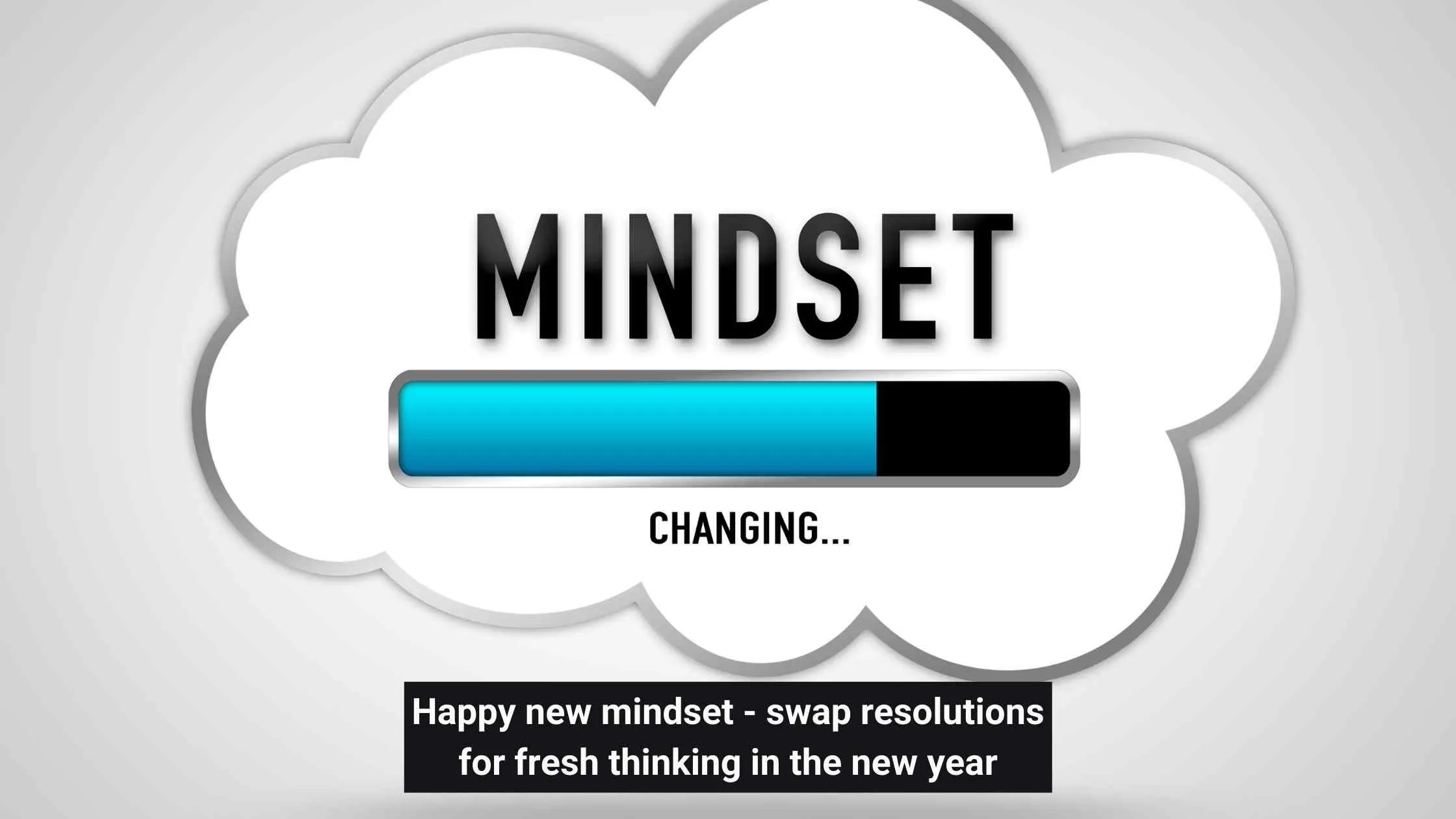
It’s that time of year
A fresh new year is the time when many of us think about aspects of our lives we’d like to change and make resolutions accordingly.
Resolutions about exercise are very common because we all know that exercise is good for us and something we should do.
But stating resolutions doesn’t mean we’ll follow through.
This is okay, we are all human and setting resolutions is an inherently flawed process.
There’s a different approach we can take to make the changes we desire.
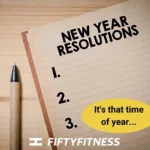
Happy new mindset
Rather than a happy new year, I wish you a happy new mindset.
Swap out resolutions for a new mindset about exercise, a fresh way of thinking about it.
In this article I’ll take you on a deep dive about mindset, starting with what it is.
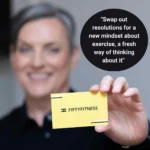
What is mindset?
You probably get the vibe of what mindset is from the word itself, but let’s have a look at some online dictionary definitions to make it clear.
- A person’s general attitudes and the way they typically think about things – Collins Dictionary
- A mental attitude or inclination / a fixed state of mind – Merriam-Webster
- A fixed attitude, disposition or mood / an intention or inclination – Dictionary.com
- A way of thinking about things – Macmillan dictionary
- A person’s way of thinking and their opinions – Cambridge Dictionary
- A set of attitudes or fixed ideas that someone has and that are often difficult to change – Oxford Learner’s Dictionaries

The overall understanding I get from these definitions is that mindset encompasses our attitudes towards and the way we think about different things, such as exercise.
I don’t agree with the notion that mindset is fixed or hard to change, it depends on the type of mindset as you’ll see below.
Research on mindsets and fitness
The scientist and educator in me likes to find research reports to learn more about topics and I found this article about mindsets and fitness.
Mindsets applied to fitness: Growth beliefs predict exercise efficacy, value and frequency
The authors describe two types of mindsets applied to their study.
Fixed mindset
A fixed mindset is a belief that our talents and traits are stable and not readily changed.
Growth mindset
Opposite to the fixed mindset, a growth mindset is the belief that our attributes can vary through learning and practice.
Moreover, people with a growth mindset tend to persist to overcome barriers and setbacks.
A mix of mindsets
The authors also point out that it’s possible to have a mix of fixed and growth mindsets across various aspects of your life.
I have a fixed mindset about being minimalist and not having much stuff in my house, while my attitude towards fitness is most definitely a growth mindset.
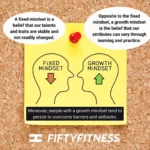
Key finding
The major finding from this study was that participants with a growth mindset reported greater frequency of exercise.
Related to this correlation between growth mindset and exercise frequency were measures of ‘self-efficacy’ and ‘self-value’.
Self-efficacy
- The extent to which individuals pursued physical activity in the face of obstacles.
An example of this could be keeping a regular exercise commitment despite having a stressful and tiring day at work.
Self-value
- The extent to which being an exerciser is part of an individual’s identity.
Identity is a key factor in mindset. In this context, we’re more likely to have a growth mindset for exercise if we see fitness and physical activity as part of who we are. This is certainly the case for me.
Attitudes towards and how we think about exercise
My biggest lesson so far as a personal trainer is realising the different attitudes people have towards exercise.
Knowing that exercise is something we should do – and we all know this – doesn’t mean that we do it.
It’s our thinking and attitudes that either motivate us to exercise or turn us off it.
The most common turn offs
These are the most common attitudes I find that turn people off exercise.
- Exercise is not a priority / not seen as self-care
- An onerous commitment of time is required
- Exercise is a big deal and must be hard to be beneficial
- An ‘all or nothing’ approach
- Not seeing yourself as an exerciser
And making a new year’s resolution to exercise will not overcome any of these.

Fresh ways of thinking about exercise
Here are a few suggestions that might help you consider a different perspective:
- The first paradigm shift to try is seeing exercise as something we can do to nurture ourselves – physically, mentally and emotionally.
- Once you make nurturing yourself a priority, practical solutions to the problem of how to fit exercise into your life will become apparent.
- You don’t have to do something punishing. Start by going for a 10 minute walk and build from there – gradual progression is key to sustainability.
- Try changing ‘all or nothing’ to ‘all or something’ – if you’ve only exercised once in a week or two, then that’s something! Don’t beat yourself up or give up completely if stuff happens and you don’t get to do everything you intended.
- See yourself as an exerciser. Look in the mirror and say to yourself ‘I am fit and healthy’ or ‘I am an exerciser’. Alternatively, close your eyes and visualise partaking in a fun physical activity or something you’d love to try.

My top tip for a different exercise mindset
If you’ve heard me give a talk or read my blogs and social media posts, you’ll see this message pop up a lot:
The only reason we need to exercise is to feel better!
Try exercise as a mental break from your daily demands and a chance to blow off some steam.
While you’re exercising just to take a break and feel good, all the benefits to physical and mental health – all the reasons we should exercise – just take care of themselves.
As Shannon said in a google review:
I felt down for some time, and that getting into exercise was a big thing. But now I ascribe to the FiftyFitness view that it’s about feeling better. I feel better, I look forward to my session, and when I wake up that day I realise it’s exercise day and I feel better already! Not only that, I’ve been inspired to find other activities to add to my life regularly to ‘feel better’, Taiko Drumming being the next off the rank.
Free resources at fiftyfitness.com.au
Did you know that I have a bunch of FREE resources on my website?
I’ve developed them to help over 50s get started or return to exercise.
You’ll find a workbook with 10 things to consider when you’re considering exercise.
There’s a home workout that requires no equipment.
And TWO video series. One to help you develop a daily warm up routine. The other provides tips on how to care for your pelvic floor while you workout.
So much goodness available for FREE!

Keep in touch
Please reach out to me if anything in this article resonates with you.
You can email me at kate@fiftyfitness.com.au or connect via social media.
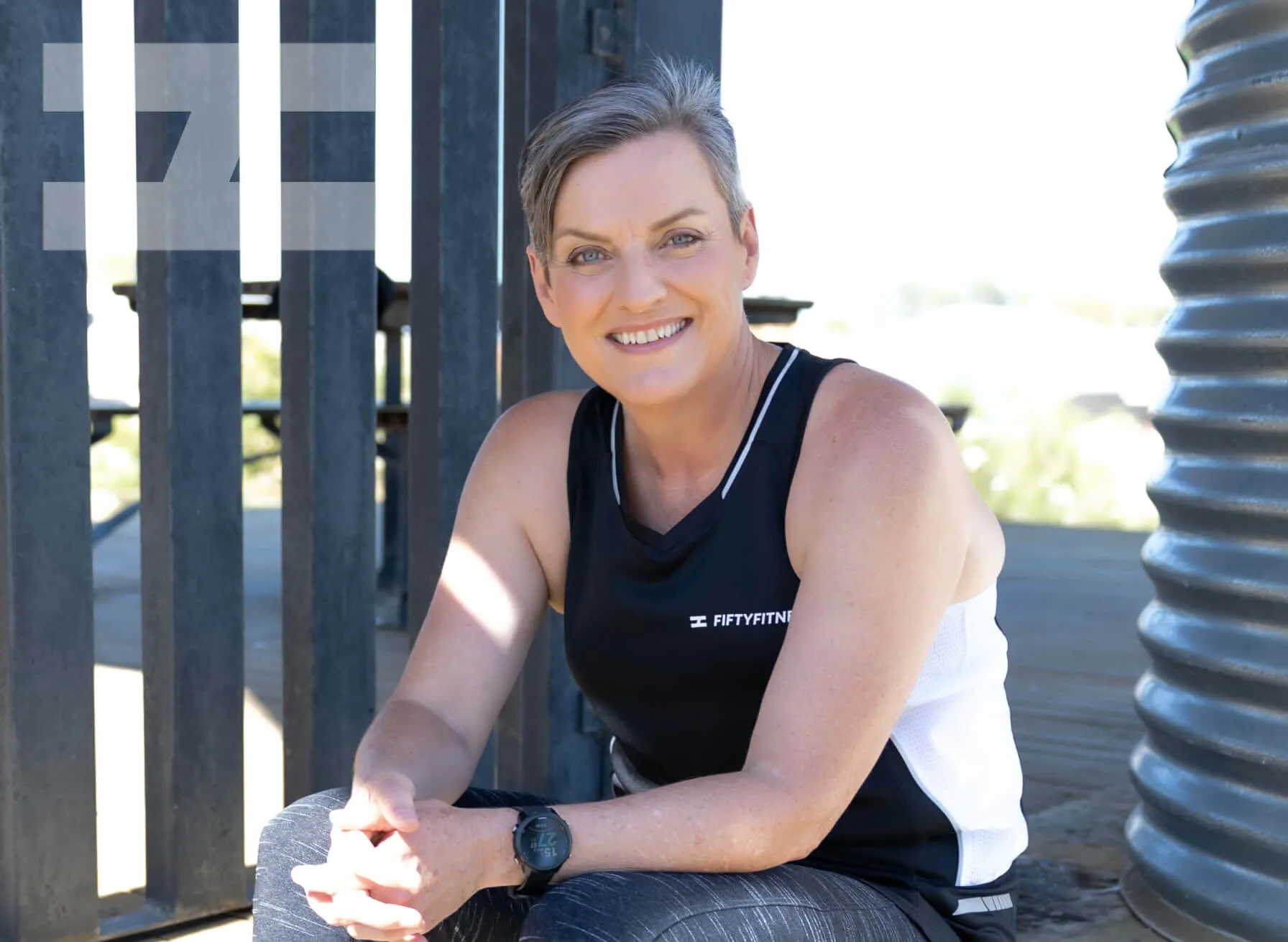
Subscribe now
Blog Subscription Form
A blog subscription form, used for the blog page and posts.
"*" indicates required fields